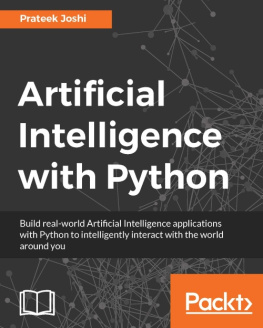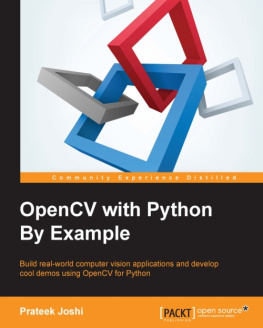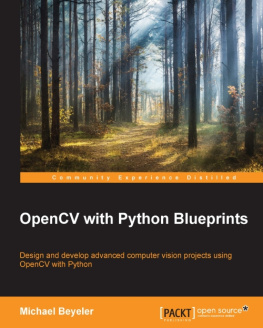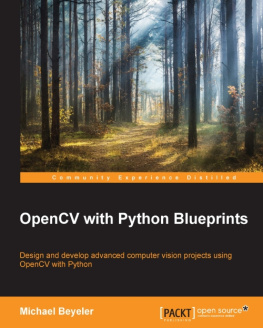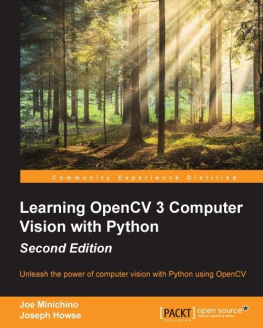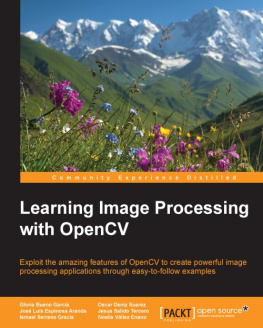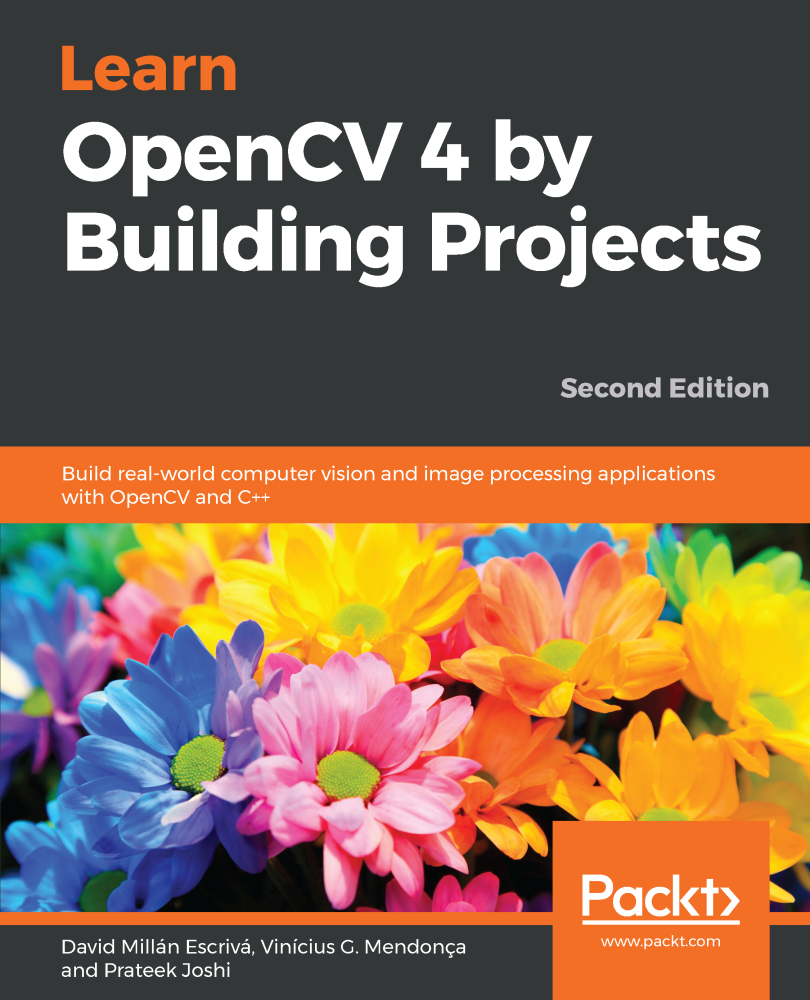Prateek Joshi - Learn OpenCV 4 by Building Projects
Here you can read online Prateek Joshi - Learn OpenCV 4 by Building Projects full text of the book (entire story) in english for free. Download pdf and epub, get meaning, cover and reviews about this ebook. year: 2018, publisher: Packt Publishing, genre: Computer. Description of the work, (preface) as well as reviews are available. Best literature library LitArk.com created for fans of good reading and offers a wide selection of genres:
Romance novel
Science fiction
Adventure
Detective
Science
History
Home and family
Prose
Art
Politics
Computer
Non-fiction
Religion
Business
Children
Humor
Choose a favorite category and find really read worthwhile books. Enjoy immersion in the world of imagination, feel the emotions of the characters or learn something new for yourself, make an fascinating discovery.

- Book:Learn OpenCV 4 by Building Projects
- Author:
- Publisher:Packt Publishing
- Genre:
- Year:2018
- Rating:3 / 5
- Favourites:Add to favourites
- Your mark:
Learn OpenCV 4 by Building Projects: summary, description and annotation
We offer to read an annotation, description, summary or preface (depends on what the author of the book "Learn OpenCV 4 by Building Projects" wrote himself). If you haven't found the necessary information about the book — write in the comments, we will try to find it.
Explore OpenCV 4 to create visually appealing cross-platform computer vision applications
Key Features- Understand basic OpenCV 4 concepts and algorithms
- Grasp advanced OpenCV techniques such as 3D reconstruction, machine learning, and artificial neural networks
- Work with Tesseract OCR, an open-source library to recognize text in images
OpenCV is one of the best open source libraries available, and can help you focus on constructing complete projects on image processing, motion detection, and image segmentation. Whether youre completely new to computer vision, or have a basic understanding of its concepts, Learn OpenCV 4 by Building Projects Second edition will be your guide to understanding OpenCV concepts and algorithms through real-world examples and projects.
Youll begin with the installation of OpenCV and the basics of image processing. Then, youll cover user interfaces and get deeper into image processing. As you progress through the book, youll learn complex computer vision algorithms and explore machine learning and face detection. The book then guides you in creating optical flow video analysis and background subtraction in complex scenes. In the concluding chapters, youll also learn about text segmentation and recognition and understand the basics of the new and improved deep learning module.
By the end of this book, youll be familiar with the basics of Open CV, such as matrix operations, filters, and histograms, and youll have mastered commonly used computer vision techniques to build OpenCV projects from scratch.
- Install OpenCV 4 on your operating system
- Create CMake scripts to compile your C++ application
- Understand basic image matrix formats and filters
- Explore segmentation and feature extraction techniques
- Remove backgrounds from static scenes to identify moving objects for surveillance
- Employ various techniques to track objects in a live video
- Work with new OpenCV functions for text detection and recognition with Tesseract
- Get acquainted with important deep learning tools for image classification
If you are a software developer with a basic understanding of computer vision and image processing and want to develop interesting computer vision applications with OpenCV, Learn OpenCV 4 by Building Projects for you. Prior knowledge of C++ will help you understand the concepts covered in this book.
Downloading the example code for this book You can download the example code files for all Packt books you have purchased from your account at http://www.PacktPub.com. If you purchased this book elsewhere, you can visit http://www.PacktPub.com/support and register to have the files e-mailed directly to you.
Prateek Joshi: author's other books
Who wrote Learn OpenCV 4 by Building Projects? Find out the surname, the name of the author of the book and a list of all author's works by series.

